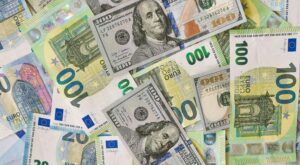Is Europe Handling Inflation Better or Worse?
Eurozone’s annual inflation rate fell to 1.5% in March, down from 1.9% in February, according to Eurostat, the statistical office of the European Union.
The drop in inflation was largely due to a decline in energy prices, which fell by 4.3% in March compared to the same month last year. Meanwhile, food, alcohol, and tobacco prices rose by 1.5% year-on-year, while non-energy industrial goods increased by 0.7%.
The lower inflation rate is likely to ease concerns among some policymakers that a rise in inflation could undermine the eurozone’s economic recovery.
However, it could also lead to worries about deflation, which can lead to a vicious cycle of falling prices, lower demand, and economic stagnation.
After months of fretting about whether workers’ pay rises would keep inflation high, central bankers in Europe have another concern: companies raising prices above and beyond what is necessary to absorb higher costs.https://t.co/lAzSHiDRZv
— The New York Times (@nytimes) March 31, 2023
The European Central Bank (ECB) has set a target of 2% inflation for the eurozone and has been pursuing an accommodative monetary policy to stimulate the economy.
The fall in inflation comes as the eurozone grapples with the economic fallout from the COVID-19 pandemic. While vaccination efforts have ramped up in recent months, many countries in the region are still facing restrictions on business activity and travel.
The ECB has pledged to maintain its accommodative policy stance until the economic recovery is firmly established, which is expected to take some time.









